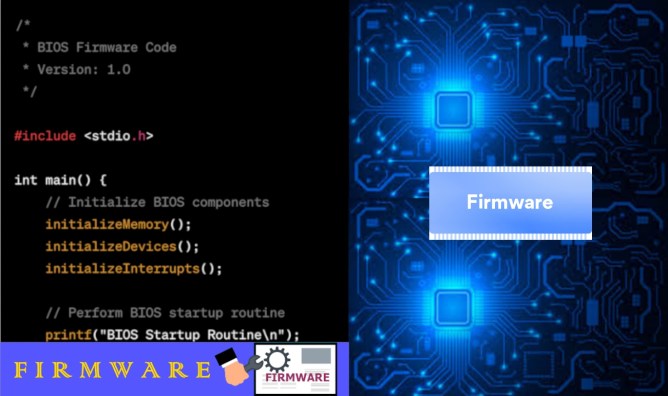What is Firmware?
In this article, we will explore what firmware is, its importance, types of firmware, common technologies, its role in different devices, challenges, and more.
Firmware plays a crucial role in the functionality and performance of various electronic devices we use in our daily lives. From smartphones to smart home appliances, it is an integral part of their operation.
Firmware is a term commonly used in the field of electronics and computing. It refers to a specific type of software that is permanently stored in non-volatile memory within a device’s hardware.
Firmware in computing refers to a type of software that is embedded in a hardware device, such as a computer, smartphone, or electronic appliance.
Unlike regular software applications that can be installed or uninstalled, firmware remains in the device even when it is powered off.
It acts as a bridge between the hardware and software, enabling the device to function properly.
Types of Firmware
There are various types of firmware used on different devices. Let’s take a look at some of the most common ones:
System Firmware: System firmware, also known as the motherboard firmware, is responsible for initializing and configuring the hardware components of a computer system.
This includes the Basic Input/Output System (BIOS) and the more modern Unified Extensible Firmware Interface (UEFI).
Device Firmware: Device firmware is specific to individual hardware devices such as printers, scanners, cameras, and network routers.
It provides the necessary instructions to control the device’s functionalities and enable communication with other devices.
Embedded Firmware: Embedded firmware is found in various consumer electronics and appliances, including smart TVs, refrigerators, washing machines, and digital cameras.
It allows these devices to perform specialized tasks and interact with users through user interfaces.
Common Firmware Technologies
Several firmware technologies are widely used on different devices. Let’s explore some of them:
BIOS (Basic Input/Output System): BIOS is a firmware technology that was prevalent in older computer systems.
It provides a low-level software interface between the hardware and the operating system, allowing the computer to boot up and initialize its hardware components.
UEFI (Unified Extensible Firmware Interface): UEFI is a modern replacement for BIOS.
It offers advanced features, such as improved security, faster boot times, support for larger storage devices, and a graphical user interface.
Microcontrollers: Microcontrollers are small integrated circuits that contain a microprocessor, memory, and other peripheral components.
They are commonly used in embedded systems and IoT devices, where firmware controls the device’s operation.
Role of Firmware in Different Devices
Firmware plays a vital role in various devices. Let’s explore its significance in different contexts:
Computers and Laptops:
For computers and laptops, firmware, such as BIOS or UEFI, ensures the proper initialization of hardware components, performs power management, and provides a standard interface for the operating system to interact with the hardware.
Mobile Phones and Tablets:
Firmware on mobile devices controls functions like touchscreen interaction, wireless communication, battery management, and other hardware features.
It also provides the foundation for the device’s operating system.
Consumer Electronics:
Firmware in consumer electronics, such as smart TVs, audio systems, and gaming consoles, enables device-specific features and allows for seamless integration with other devices and services.
Internet of Things (IoT) Devices:
IoT devices heavily rely on firmware to control their sensors, actuators, and connectivity modules.
It enables them to collect and transmit data, interact with other devices, and execute predefined tasks.
Challenges in Firmware Development
Firmware development presents several challenges that must be addressed. Some of the key challenges include:
- Security Vulnerability: Firmware can be prone to security vulnerabilities that can be exploited by malicious actors.
It is crucial to implement secure coding practices, encryption, and regular security audits to protect against potential threats. - Hardware Limitations: Firmware development often involves working with hardware that may have limitations in terms of memory, processing power, and storage.
Developers need to optimize the firmware code to work within these constraints. - Compatibility Issues: Firmware must be compatible with the specific hardware it is designed for.
Ensuring compatibility across different hardware revisions and variations can be a complex task, requiring thorough testing and debugging.
Conclusion
In summary, firmware is a crucial component in computing that provides the essential instructions and code to control and operate hardware components within a device.
It acts as a bridge between the hardware and software, enabling the smooth functioning of computer systems.
What is Firmware? Importance, Types, Common Technologies, and Role in Different Devices Share on X

